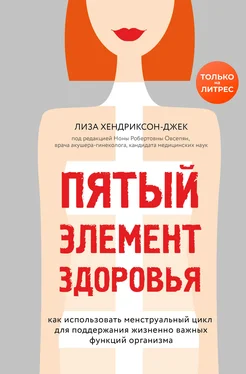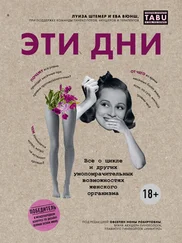87. Peterson, Linda Gay, and Lori Pbert. “Effectiveness of a meditation-based stress reduction program in the treatment of anxiety disorders.” American Journal of Psychiatry 149, no. 7 (1992): 936–943; Goyal, Madhav, Sonal Singh, Erica MS Sibinga, Neda F. Gould, Anastasia Rowland-Seymour, Ritu Sharma, Zackary Berger et al. “Meditation programs for psychological stress and well-being: a systematic review and meta-analysis.” JAMA Internal Medicine 174, no. 3 (2014): 357–368; Kabat-Zinn, Jon, Elizabeth Wheeler, Timothy Light, Anne Skillings, Mark J. Scharf, Thomas G. Cropley, David Hosmer, and Jeffrey D. Bernhard. “Influence of a mindfulness meditation-based stress reduction intervention on rates of skin clearing in patients with moderate to severe psoriasis undergoing photo therapy (UVB) and photochemotherapy (PUVA).” Psychosomatic Medicine 60, no. 5 (1998): 625–632.
88. Kaplan, Stephen. (1992). “The restorative environment: Nature and human experience.” Role of Horticulture in Human Well-Being and Social Development: A National Symposium. Arlington, Virginia: Timber Press, 134–142; Bowler, Diana E., Lisette M. Buyung-Ali, Teri M. Knight, and Andrew S. Pullin. “A systematic review of evidence for the added benefits to health of exposure to natural environments.” BMC Public Health 10, no. 1 (2010): 456; Shanahan, Danielle F., Robert Bush, Kevin J. Gaston, Brenda B. Lin, Julie Dean, Elizabeth Barber, and Richard A. Fuller. “Health benefits from nature experiences depend on dose.” Scientific Reports 6, no. 28551 (2016): 1–10.
89. Ulrich, Roger S., Robert F. Simons, Barbara D. Losito, Evelyn Fiorito, Mark A. Miles, and Michael Zelson. “Stress recovery during exposure to natural and urban environments.” Journal of Environmental Psychology 11, no. 3 (1991): 201–230.
1. Iacovides, Stella, Ingrid Avidon, and Fiona C. Baker. “What we know about primary dysmenorrhea today: a critical review.” Human Reproduction Update 21, no. 6 (2015): 762–778.
2. Ju, Hong, Mark Jones, and Gita Mishra. “The prevalence and risk factors of dysmenorrhea.” Epidemiologic Reviews (2013): 104–113.
3. Lefebvre, Guylaine, Odette Pinsonneault, Viola Antao, Amanda Black, Margaret Burnett, Kymm Feldman, Robert Lea, and Magali Robert. “Primary dysmenorrhea consensus guideline.” Journal of Obstetrics and Gynaecology Canada 27, no. 12 (2005): 1117–1146; Iacovides, Stella, Ingrid Avidon, and Fiona C. Baker. “What we know about primary dysmenorrhea today: a critical review.” Human Reproduction Update 21, no. 6 (2015): 763.
4. Iacovides, Stella, Ingrid Avidon, and Fiona C. Baker. “What we know about primary dysmenorrhea today: a critical review.” Human Reproduction Update 21, no. 6 (2015): 763; Ju, Hong, Mark Jones, and Gita Mishra. “The prevalence and risk factors of dysmenorrhea.” Epidemiologic Reviews (2013): 104.
5. Lefebvre, Guylaine, Odette Pinsonneault, Viola Antao, Amanda Black, Margaret Burnett, Kymm Feldman, Robert Lea, and Magali Robert. “Primary dysmenorrhea consensus guideline.” Journal of Obstetrics and Gynaecology Canada 27, no. 12 (2005): 1120.
6. Iacovides, Stella, Ingrid Avidon, and Fiona C. Baker. “What we know about primary dysmenorrhea today: a critical review.” Human Reproduction Update 21, no. 6 (2015): 763; Ju, Hong, Mark Jones, and Gita Mishra. “The prevalence and risk factors of dysmenorrhea.” Epidemiologic Reviews (2013): 104.
7. Iacovides, Stella, Ingrid Avidon, and Fiona C. Baker. “What we know about primary dysmenorrhea today: a critical review.” Human Reproduction Update 21, no. 6 (2015): 762–778.
8. Ricciotti, Emanuela, and Garret A. FitzGerald. “Prostaglandins and inflammation.” Arteriosclerosis, Thrombosis, and Vascular Biology 31, no. 5 (2011): 986–1000.
9. Jabbour, Henry N., Kurt J. Sales, Rob D. Catalano, and Jane E. Norman. “Inflammatory pathways in female reproductive health and disease.” Reproduction 138, no. 6 (2009): 909.
10. Там же, 903–919.
11. Там же, 986; You & Your Hormones | Hormones | Prostaglandins. “You & Your Hormones.” Accessed January 12, 2017. www.yourhormones.info/hormones/prostaglandins.aspx
12. Lundström, V., and K. Green. “Endogenous levels of prostaglandin F 2α and its main metabolites in plasma and endometrium of normal and dysmenorrheic women.” American Journal of Obstetrics and Gynecology 130, no. 6 (1978): 640–646.
13. “Nonsteroidal anti-inflammatory drug.” Accessed September 28, 2017. en.wikipedia.org/wiki/Nonsteroidal_anti– inflammatory_drug
14. Iacovides, Stella, Ingrid Avidon, and Fiona C. Baker. “What we know about primary dysmenorrhea today: a critical review.” Human Reproduction Update 21, no. 6 (2015): 762–778; Gislason, Gunnar H. “NSAIDs and cardiovascular risk.” American Family Physician 80, no. 12 (2009): 1366–1366; Tamblyn, Robyn, Laeora Berkson, W. Dale Dauphinee, David Gayton, Roland Grad, Allen Huang, Lisa Isaac, Peter McLeod, and Linda Snell. “Unnecessary prescribing of NSAIDs and the management of NSAID-related gastropathy in medical practice.” Annals of Internal Medicine 127, no. 6 (1997): 429–438; Hörl, Walter H. “Nonsteroidal anti-inflammatory drugs and the kidney.” Pharmaceuticals 3, no. 7 (2010): 2291–2321.
15. Rubi-Klein, Katharina, Elisabeth Kucera-Sliutz, Helmut Nissel, Michaela Bijak, Daniela Stockenhuber, Matthias Fink, and Evemarie Wolkenstein. “Is acupuncture in addition to conventional medicine effective as pain treatment for endometriosis? A randomised controlled cross-over trial.” European Journal of Obstetrics & Gynecology and Reproductive Biology 153, no. 1 (2010): 90–93.
16. Prasad, A.S. “Zinc is an antioxidant and anti-inflammatory agent: its role in human health.” Frontiers in Nutrition 1 (2014): 1–10; Kelly, R.W., and M.H. Abel. “Copper and zinc inhibit the metabolism of prostaglandin by the human uterus.” Biology of Reproduction 28, no. 4 (1983): 883–889; Eby, George A. “Zinc treatment prevents dysmenorrhea.” Medical Hypotheses 69, no. 2 (2007): 297–301.
17. Kashefi, Farzaneh, Marjan Khajehei, Mahbubeh Tabatabaeichehr, Mohammad Alavinia, and Javad Asili. “Comparison of the effect of ginger and zinc sulfate on primary dysmenorrhea: a placebo-controlled randomized trial.” Pain Management Nursing 15, no. 4 (2014): 826–833; Sundari, Luh Putu Ratna, Nyoman Adiputra, I Putu Gede Adiatmika, and I Made Krisna Dinata. “Oral administration of zinc capsule for 4 days before menstrual period decreases prostaglandin (PGF2α) level and pain intensity in women with primary dysmenorrhea.” International Journal of Science and Research 6, no. 3 (2017): 1081–1084; Sangestani, Gita, Mahnaz Khatiban, Roberto Marci, and Isabella Piva. “The positive effects of zinc supplements on the improvement of primary dysmenorrhea and premenstrual symptoms: a double-blind, randomized, controlled trial.” Journal of Midwifery and Reproductive Health 3, no. 3 (2015): 378–384.
18. Malpuech-Brugère, Corinne, Wojciech Nowacki, Maryvonne Daveau, Elyett Gueux, Christine Linard, Edmond Rock, Jean-Pierre Lebreton, Andrzej Mazur, and Yves Rayssiguier. “Inflammatory response following acute magnesium deficiency in the rat.” Biochimica et Biophysica Acta (BBA) – Molecular Basis of Disease 1501, no. 2 (2000): 91–98; Volpe, Stella Lucia. “Magnesium in disease prevention and overall health.” Advances in Nutrition: An International Review Journal 4, no. 3 (2013): 378S–383S; Alaimo, Katherine, Margaret A. McDowell, R.R. Briefel, A.M. Bischof, C.R. Caughman, C.M. Loria, and C.L. Johnson. “Dietary intake of vitamins, minerals, and fiber of persons ages 2 months and over in the United States: third national health and nutrition examination survey, phase 1, 1988–91.” Advance Data 258 (1994): 1–28; Marier, J.R. “Magnesium content of the food supply in the modern-day world.” Magnesium 5, no. 1 (1985): 1–8.
Читать дальше
Конец ознакомительного отрывка
Купить книгу












